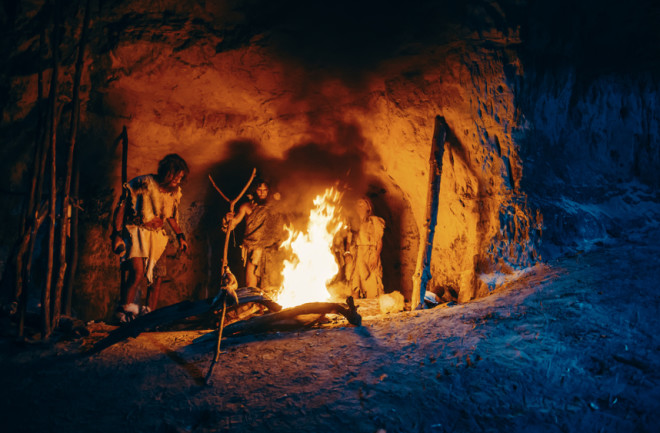We often associate the word “caveman” with crude simplicity. But based on a new finding — the first ever evidence of Neanderthals' ability to extract tar from plants — maybe we should, instead, use it as a stand-in for technological innovation.
Researchers discovered a new kind of fire pit dating back about 60,000 years. After analyzing its novel design — a ringed trench rather than a simple pit — and the traces of chemical components left behind by burning, they determined that Neanderthals used it to produce tar from rockrose (Cistus ladanifer). They then employed that tar to attach stone to wood for making both tools and weapons.
"As far as we know, this is the first evidence of the use of Cistus ladanifer for obtaining tar by Neanderthals," says Juan Ochando, an author of the study and plant biology professor at the University of Murcia, Spain. "For this reason, it can be said that it was unexpected."
The scientists reverse-engineered the methods the Neanderthals likely used in this process and demonstrated that they did indeed produce tar. They reported their results in Quaternary Scientific Reviews.
Harnessing Fire
It’s essentially a given that, once early man discovered how to make, control, and even transfer fire, they tapped into it as a source for light, heat, and cooking. More recently, archeologists have also found evidence that Neanderthals also harnessed fire to smoke food, harden wood, and create resins needed to make tools.
“Our results advance our understanding of Neanderthal behaviour, as the ability to organize activities related with the use of fire,” said the authors in the paper.
The scientists used many chemical and geological analytical methods to determine how the pit was built and used. They detected minerals, pollen, and guano from the period.
Read More: Neanderthals Really Were All Fired Up
Reverse Engineering Neanderthal Process
Here’s how they think the Neanderthals made tar. First, they lined the bottom of the trough with dried rockrose leaves. Next, they covered the leaves with a soil and sand mixture. Then they added a layer of guano on top, and lit dry grasses to start and maintain a fire. After the guano layer formed a crust and cooled off, they broke through it to harvest the pitch.
The researchers dug a pit similar to the one they found in the cave. Then they followed the step-by-step process they intuited via their analytical methods. Finally, they harvested the pitch and used it to haft a stone spear tip to a wooden shaft.
Read More: Neanderthals Also Had Superior Toolmaking Abilities, Not Just Humans
Producing Tar with Available Resources
“We managed to produce a significant amount of tar in a relevant period of time of not more than 4 hours, counting from collecting wood to hafting,” the authors said in the paper.
They theorized that similar methods — but probably with different hearth or fire pit designs — have been used to create pitch from birch. But this design shows how early man could adapt to his surroundings and use specialized techniques to take advantage of available resources.
For instance, there likely was plenty of rockrose in that area 60,000 years ago, but little or no birch. This level of specialization shows that early man could be quite sophisticated in creating materials for tools.
“Neanderthals were able to construct layered and complex hearths with specific technological objectives that could have included tool, medicine and/or weapon elaboration,” the paper concludes.
Read More: The Neanderthal Timeline Shows They Thrived for 400,000 Years, Then Disappeared
Article Sources
Our writers at Discovermagazine.com use peer-reviewed studies and high-quality sources for our articles, and our editors review for scientific accuracy and editorial standards. Review the sources used below for this article:
Quaternary Scientific Reviews. A Neanderthal's specialised burning structure compatible with tar obtention
Before joining Discover Magazine, Paul Smaglik spent over 20 years as a science journalist, specializing in U.S. life science policy and global scientific career issues. He began his career in newspapers, but switched to scientific magazines. His work has appeared in publications including Science News, Science, Nature, and Scientific American.

